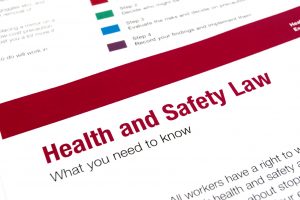 1. Legislation
1. LegislationIn 2018, we saw a significant development in the importance of, and resources committed to, mental health. Campaigns, public figures and unions all did much to raise awareness and to signpost what organisations can do to protect the mental health of employees, and support those struggling with their mental health.
Campaigns such as #TimetoChange and World Mental Health Day both played parts in encouraging conversations about mental health. With this momentum, we anticipate continued focus on this topic and a spotlight on existing legislation.
A recent independent review, Modernising the Mental Health Act: Increasing Choice, Reducing Compulsion, finds that the Mental Health Act 1983 is “outdated and paternalistic”.
“It was written when people with a mental health problem were something to be afraid of,” said Professor Sir Simon Wessely, who chaired the review group of mental health professionals, academics and patients.
“But the way we think about mental health and illness has changed dramatically, so now they are more likely to be seen as people to be helped.”
These findings, coupled with Theresa May’s announcement to invest £2.3 billion in support for individuals suffering from mental health conditions, indicate that 2019 could be another year of significant change in this field.
It is a legal requirement to have a written health and safety policy if your organisation employs more than five people, and policies are essential to maintain the required level of safety in your workplace.
Typical health and safety policy and procedures should normally include the following.
According to the Health and Safety Executive (HSE), workers are as likely to have an accident in the first six months at a workplace as during the whole of the rest of their working life.
In situations where reportable accidents do occur at work, the HSE is responsible for enforcing the RIDDOR process.
Accident and disease reports should be submitted online. The options include forms to report: an injury, dangerous occurrence, injury offshore, dangerous occurrence offshore, case of disease, inflammable gas incident and dangerous gas fitting.
A telephone reporting service is available for reporting only fatal or specified, and major incidents.
As the HSE isn’t an emergency service, you don’t need to contact them out of office hours to report workplace injuries. Some situations where the HSE may need to respond during out-of-office hours include a:
Sadly, 2018 brought a number of reports of fires, highlighting the importance of ensuring safety and assessing risks before any unfortunate incident occurs. As recommended by the HSE, important steps to take as an employer are to:
Hazardous substances are largely regulated in the UK by the Control of Substances Hazardous to Health Regulations 2002 (COSHH).
Substances hazardous to health can take many forms and include chemicals, fumes, dusts, vapours, mists, nanotechnology, gases and asphyxiating gases, biological agents, and certain germs.
For further advice contact Walker Health and Safety Services Limited